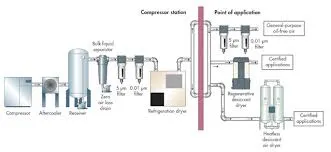Aug . 05, 2024 20:34 Back to list
High-Performance Tie Rod Hydraulic Cylinders for Enhanced Industrial Applications and Reliable Operation
Understanding Tie Rod Hydraulic Cylinders An Overview
Tie rod hydraulic cylinders are a crucial component in a wide range of industrial applications, providing power and precision in various machinery. These hydraulic cylinders are designed with a robust structure characterized by high-tensile steel tie rods that serve to hold the cylinder body together. Their design not only enhances durability but also facilitates easy maintenance and replacement, making them a popular choice in various sectors including construction, agriculture, and manufacturing.
What are Tie Rod Hydraulic Cylinders?
At their core, tie rod hydraulic cylinders convert hydraulic energy into linear mechanical energy. They consist of a cylinder barrel, piston, and tie rods. The cylinder barrel is where the hydraulic fluid operates, creating force that moves the piston. The tie rods, typically found on the exterior of the cylinder, are secured at both ends, ensuring that the cylinder can withstand high pressure without deforming. This construction allows for greater flexibility in design, enabling the production of various sizes and configurations tailored to specific operations.
Applications of Tie Rod Hydraulic Cylinders
The applications of tie rod hydraulic cylinders are vast and varied. In construction machinery, they can be found in excavators, loaders, and cranes, enabling powerful lifting and digging movements. In the agricultural sector, these cylinders play a vital role in equipment such as tractors and harvesters, improving efficiency and effectiveness in farming operations.
Additionally, tie rod hydraulic cylinders are essential in manufacturing processes, where they assist in forming, pressing, and stamping operations. Their ability to provide controlled motion and exert considerable force makes them ideal for tasks that require precision. The automotive industry also benefits from these cylinders during assembly processes, ensuring components are placed accurately and securely.
tie rod hydraulic cylinder product

Advantages of Tie Rod Hydraulic Cylinders
One of the primary advantages of tie rod hydraulic cylinders is their strength and durability. The use of high-strength materials allows these cylinders to operate under extreme conditions while minimizing the risk of failure. Furthermore, their design offers easy maintenance access, which is crucial for minimizing downtime in industrial operations. Routine inspections and part replacements can be carried out quickly, thus enhancing operational efficiency.
Another significant benefit is their versatility. Tie rod hydraulic cylinders can be customized to match specific requirements, such as stroke length, bore size, and mounting configurations. This adaptability makes them suitable for both general and specialized applications.
Maintenance and Care
To ensure the longevity and performance of tie rod hydraulic cylinders, regular maintenance is essential. Routine checks for leaks, ensuring proper alignment, and monitoring fluid levels can prevent many common issues. It is also crucial to use the correct hydraulic fluid and maintain proper cleanliness to prevent contamination, which can lead to premature wear and potential failure.
In conclusion, tie rod hydraulic cylinders are a vital component in many industries, offering power, precision, and durability. Their robust construction and versatility make them indispensable in countless applications ranging from heavy machinery to manufacturing processes. By understanding their design and function, industry professionals can better appreciate their importance and ensure their proper care and maintenance for long-lasting performance. As technology continues to advance, tie rod hydraulic cylinders will undoubtedly evolve, providing even greater efficiency and capability in industrial operations.
-
1.5 Ton Flipping Oil Cylinder 70/82-40-217-720 - Hebei Shenghan | Hydraulic Solutions, Customization
NewsSep.01,2025
-
1.5 Ton Flipping Oil Cylinder 70/82-40-217-720 - Hebei Shenghan Hydraulic Machinery Co., Ltd.|Precision Engineering&Customizable Hydraulic Components
NewsSep.01,2025
-
1.5 Ton Flipping Oil Cylinder 70/82-40-217-720 - Hebei Shenghan
NewsSep.01,2025
-
1.5 Ton Flipping Oil Cylinder 70/82-40-217-720-Hebei Shenghan Hydraulic Machinery Co., Ltd.|Customization, Chrome-Plated Piston Rod, Indel Seals
NewsSep.01,2025
-
1.5 Ton Flipping Oil Cylinder 70/82-40-217-720-Hebei Shenghan|Customizable Hydraulic Cylinder&Durable Oil Cylinder
NewsSep.01,2025
-
1.5 Ton Flipping Oil Cylinder 70/82-40-217-720 | Hebei Shenghan
NewsSep.01,2025
